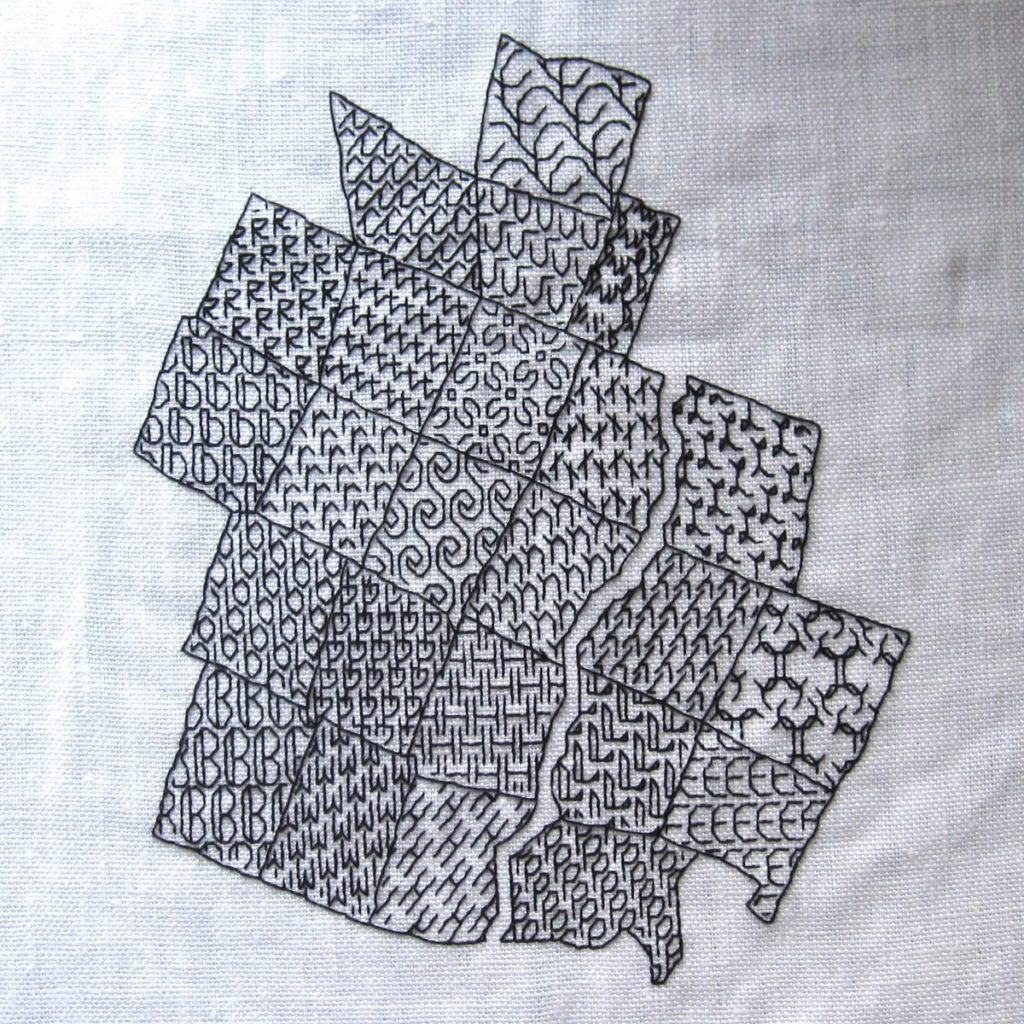 If you follow the ReveDreams Facebook page you know I’m taking part in a mystery afghan crochet-along (Ravelry account probably required for that last link). I wasn’t sure about it at first; afghans are a big commitment, and when you don’t even know what it will look like? But I decided to trust the designer, whose other work I quite like, and the “art deco” in the afghan description. The hubs and I chose colors, and I ordered 4660 yards of yarn. That’s all in the two shades of purple and gray shown; I don’t yet have the joining yarn, which will be black.
If you follow the ReveDreams Facebook page you know I’m taking part in a mystery afghan crochet-along (Ravelry account probably required for that last link). I wasn’t sure about it at first; afghans are a big commitment, and when you don’t even know what it will look like? But I decided to trust the designer, whose other work I quite like, and the “art deco” in the afghan description. The hubs and I chose colors, and I ordered 4660 yards of yarn. That’s all in the two shades of purple and gray shown; I don’t yet have the joining yarn, which will be black.
I have clues 1-4 of 8 in my possession and they will continue to come out every Friday through the middle of August. I’ve stitched the first two clues over the past ten days, eating up far more yarn than I normally would in that time. The first lesson I’ve had to learn is how to deal with 16 skeins of yarn, 9 of which are double-size and at least 4 of which are “active” at any given time (I’ve gotten up to 6: one dark purple tied up in a motif whose instructions are spread over multiple clues and two more so I could do a spiral that had two dark purple strands). I also have to do something with the motifs finished so far. I’ve decided that, after photographing, I’m going to close the motifs for each clue in a plastic bag and label it with the clue number. Everything “inactive” is getting stored in the box the yarn was shipped in, which currently is just sitting on the floor in my sewing room (note: that doesn’t make it in any way unique among my craft supplies).
There’s a complication to this afghan that isn’t present in my other long-term project, the blackwork embroidery map: the materials in use at any given time are bulky and in many pieces. Usually I have one project bag with materials for several projects in it simultaneously – the life of an amigurumi designer! For this project I got out a smallish bag for the multi-clue motif and its active yarn, another for small amounts of yarn left at the end of skeins (just in case), and a larger bag that holds those two as well as the full or mostly full skeins of yarn. I’m considering buying a large basket to put them in so all three bags are still together but I have space in the large one for finished motifs of a clue still in progress. If I do, I’ll also keep the embroidery project in the basket.
Such a system not only looks neater, it makes it easier to move the project around if it’s in the way, which is bound to happen multiple times over such a long stretch. The soonest I could finish the afghan is late August, simply because I won’t have all the clues until the 15th. However, this brings us to the other lesson of this project: pacing myself. Each clue so far has taken at least 8 hours of stitching, and I’m two clues behind. My other considerations are that I’d like to finish the blackwork by some time this fall, write every other week for the local fibercraft blog, and keep up with my monthly goals here. I also need a substantial amount of time (30+ hours per week) to dedicate to my web development job. That’s not to mention that I want to continue to have a social life, spend time online, and read books. Something’s got to give in that scenario, and it’s the afghan. I’ve decided to spread out the stitching to a third of a clue per week, plus two towns on the blackwork map. That gets the map finished in mid-October (just in time for making Halloween costumes) and the afghan done by Thanksgiving, unless joining and edging take a very long time (just in time for making Christmas presents). Afghan and map work should run 4-5 hours per week, dropping down to 3ish hours when the map is done — though by then I may have a new long term project.
Delayed gratification and responsible time management are the watchwords. It’s the right thing to do for my goals and priorities. It just feels so slow!


